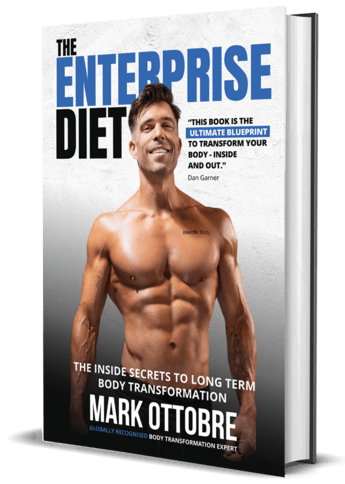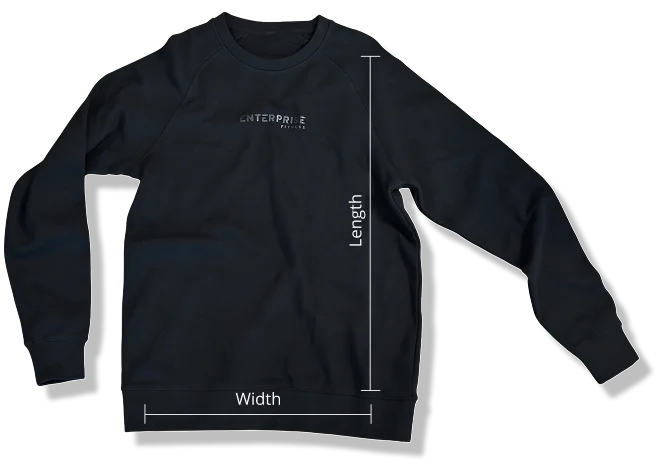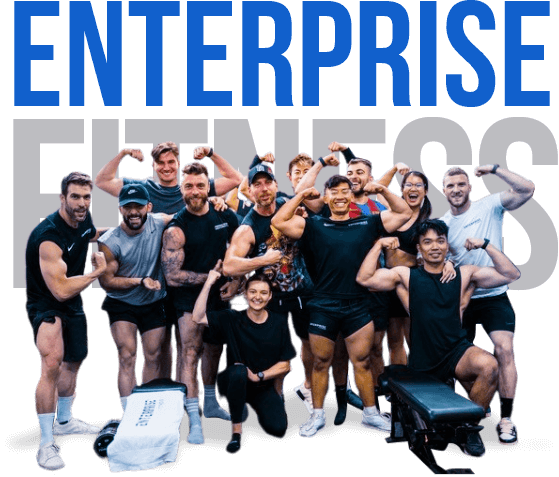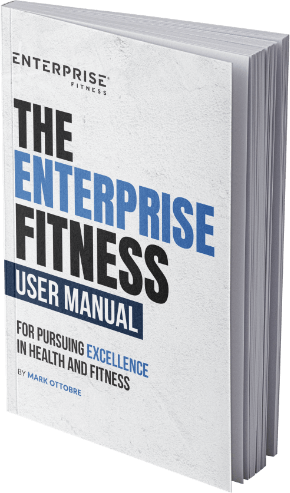In this episode of the Wolf’s Den, Eugene Teo answers the audience’s questions. Click here to watch.
Listen on iTunes or Soundcloud:
Transcript From Eugene Teo Q & A on the Wolfs Den with Mark Ottobre Video
(This transcription may contain errors)
Welcome back to the Wolf’s Den. We’ve got studio questions. Let’s begin with young James Kelly.
For you as a coach, where would you look to someone who had multiple hamstring strains but has presented like they have strong hamstrings?
How are you testing strength of hamstrings?
So just through basic stability and strength tests with professionals, in a treatment sense.
Okay. Multiple hamstring strains, tested hamstrings. Again, not sure exactly what that means, but let’s just say whatever it is, you’ve passed the tests. Look, rarely whenever you have pain, whenever you have an injury, rarely is that injury site what the root cause really is. That’s usually the first thing that broke, or the first thing that really signified an issue as a symptom, but it’s usually something much, much deeper than that. So where would I go? I would probably go to, if like it makes logical sense to go straight to that injury, so I’d look at the hams but you already have, it would then be to go up and down. Look, when I can look at the hamstrings I found that actually to be quite boring. What I normally find the issue is, is hip flexes.
So my next question was going to be, what do you find are the best exercises to isolate the hips and make them stronger?
Okay, very, very simple. You’ve got to understand what are the hip flexes or group of muscles, where they attach on the body. Which is my question for you. If you know about hip flexes, where are they?
You tell me.
No, no, no. You’ve done your research roughly where, don’t give me a doctor answer, tell me like what roughly where are they?
Oh well obviously from the top of the femur in to …
Yeah. So you’ve got like, you’ve got this guy here is right around your iliac crest or whatnot, and then down in your femur. So what does that muscle do?
Flexes and extends the hip?
It doesn’t, it’s not a hip extensor, it’s a hip flexor, it flexes the hip. So what you need to do is first of all, understand can you isolate that muscle? And of course you can. You can wake up and activate the muscle by going through what motion?
Flexion?
Flexion of the hip. So what would that look like?
Flexion of the hip?
What might it look like? If I’m say sitting down, so torso, legs out in front of me, L shape, what do I have to do to my legs?
Push your legs up.
Push my legs up. And what you’ll find for a lot of people, probably yourself, if you’d done that, in a very, very basic introductory thing, that’s a hip flex exercise, flexing of the hip, you’ll probably feel a whole bunch of tension there. So I use things like that would be a pike pulse, or it could be an isometric L sit, or a V sit position where you’re flexing the hips and the abs. You would in this context, try to eliminate abdominal flexion, and keep that part relaxed, and just focus on the legs raising up, to get that hip flexion. And you’ll probably highlight a lot of weakness in that area. And that will be your first starting point.
I tell people always, before you go into all the fancy shit, just make sure, do you have an inventory of what that muscle actually is. Before I give you 25 different biceps exercises, do you know for yourself, what a bicep contraction really feels like? Do you know where your biceps are, or what it is? Which sounds very esoteric and weird. Of course you know what you’re fucking bicep is, but people are always surprised how little they really understand, and own that biceps. They know that technically what a biceps is, but they don’t really know what it feels like, and they don’t have that complete ownership from brain to muscle, mind to muscle connection. That’s how I’d describe it as a bodybuilder.
Hip flexes are the same. People know what a hip flex is, they know they’ve obviously got hip flexes but they don’t have that clear clarity of what the hip flexes really are. To the same extent, maybe as their biceps. Like yeah, I’m sure we can get a really good biceps pump. Yeah? Really good biceps contraction. Have you ever had any hip flexes? Probably not.
So how well do you think your brain owns and knows and is aware of a hip flexor? Probably not. And that would then be something you need to now clarify, and that would then maybe reverse engineer, help with the hamstring.
Just on that, you’re basically saying that it’s people’s hip flexes are too weak, in comparison to their hamstrings?
Almost-
And that’s why they’re tearing the hamstrings, is because the antagonist muscle isn’t strong enough to deal with the demands of what the hamstrings force, even though it’s presenting as strong, it’s actually the antagonist muscle that’s not enabling the hip. To deal with force.
Yeah. This is where you got to go with maybe a little bit deeper into understand what did the hamstrings from do? What are the hamstrings do? What are their two major functions? Knee flexion, bending the knee, and hip extension. Now those are technically the two major goals, but the real functional role that are hamstrings, is to resist flexion. Because how often are you really doing knee flexion, under load, in life? No, you’re not. How much are you actually doing hip extension in life for the hamstrings? A little bit for sure.
But of course you’ve got the glutes as well. Okay. But when do you use your hamstrings the most? It’s walking or running, gait, cycle, jumping. Is that a lot of knee flexion load, or hip extension load? Not really. It’s when you launch your leg up into, what’s this? This is flexion, when you’re running or when you are jumping, your hamstrings are loading up eccentrically, to stop you from losing your fucking leg. It’s when you land from a run, from a jump, you absorb that impact into hip flexion. Your hamstrings are working eccentrically to absorb the force of your torso, so you don’t lose your fucking torso.
And this is why they’re predominantly fast twitch muscle fibers.
Yeah, You could put it down to, but it’s really, it’s only at 60% or so, which is not a huge dichotomy there at all. But that’s what the real role is. It’s not flexion of the knee, it’s not hip extension. Technically, yes it is, but it’s more the resistance eccentrically to flexion, to hip flexion, which then tells us that, hey, part of getting the hamstrings under a lot less strain is to have not just more eccentric control over hip flexion, but also a lot of control over, a lot of control over active inflection, which means hip flexion has gotta be stronger.
Eugene what’s the plan for the next one, three, five years?
Good question. See, I’ve never had a plan. It’s always just been organic growth, and then take it wherever that health path takes me. I never planned on touring. I never planned on being an online coach, I never planned on leaving personal training. I was quite happy with it. Then just organically, just through my own growth, opportunities arose and I thought, I’m going to take these opportunities and just see where it takes me. So at the moment the next plan is to do another world tour through 2019.
And I do have sort of have running the same kind of events that I’ve been running so far, and diversify a little bit more. It is also going to be a lot of collaborations with other people, because I enjoy understanding, meeting people, understanding their context, understanding their background, and learning from them. I want to learn from as many people as I can all the time.
I’m always going to be that student. Even when I go to a class, I learn from my students. They teach me new things, because they’ve got different questions or ideas. That’s where I’m going to look to explore that more. This year was very much about people need to know what I do, or who I am, and get my exposure out there. Now it’s like, okay, they’ve sort of got that. Now I want to have fun with it myself. Not that I wasn’t having fun this year, but I want to have fun with exploring how other people think, a lot more, and collaborate.
Another concept that I’m working with at the moment is I do have a website coming out very soon. Where there’s going to be a lot of content going out there of just me, just sharing everything that I’ve already been sharing, but at a much deeper level, to help people understand it more. Because it’s again, not because I necessarily planned on that, but because people asked me for his thing. “Hey look when are you going to come to India?” Probably never.
“When are you gonna come to Antarctica?” Probably never.
So how can I help those people understand a bit more what I do? And how can I even at least systemize my Instagram? Because they’re like, “Hey, do you have a good exercise for tibia anterior?” I’ve actually got dozens, but it’s 10 fucking pages down on my Instagram. Maybe I’ve got to find a way to systemize that. And that’s where the website’s gonna come in as well.
You briefly mentioned in the interview, but can you just talk through what your supplementation protocol was for healing yourself of caffeine addiction?
Right, right. Okay. Yeah. Recovering coffee addicts anonymous. Yeah. First of all, it’s filling in any gaps on the energetic cycle, the energy production cycle. So the most important things are your B vitamins, so making sure that they’re not just B, but they’re activated B vitamins. So there’s really been methylated will activate as your body can utilize them properly. It’s magnesium, it is zinc, it is selenium, it is carnitine and coQ10. They’re the major things on a cellular level that your body needs, to be able to produce energy adequately to begin with. Hit those motors, which we’ll get from most multivitamins, like maybe a high quality, like a form or whatever, these activated B’s. Something like that should cover the basis for the most part.
And then once that’s covered, we need to look at, okay, we’re reducing caffeine, what’s that going to cause issues with? How does caffeine work? Or what’s the mechanism of action? It attaches to the adenosine receptor. Okay, so adenosine is what your body builds up, as your brain burns through it’s braingle action through the day, and causes fatigue over time. It’s a calming or sedative have kind of a hormone or chemical. So if you no longer get that receptor antagonist from the caffeine, you’re going to get a buildup of adenosine.
So what one, other things that adenosine does, is when you get this big surge and it will cause vasodilation. So a lot of people get headaches when they come off caffeine. It’s not because of the withdrawal from caffeine, it’s because of the surge of adenosine, which causes them this big rush of vasodilation. I don’t know why more in the actual brain, but it tends to happen in the brain, and you get these headaches.
So it’s going to be doing things that may, through other mechanisms help with vasoconstriction. So the major hormone for that, they want to be manipulating is norepinephrine. And that’s where we want to be looking at things like cold exposure. I find to be very, very useful to help with norepinephrine. To help with dopamine as well. And I’m not sure if it actually works on a receptor level as well, but let’s just say that it does, for science, that will be useful to be working on at that level.
Other things you may look to add in as well, Teacrine, the substance, not Theacrine, it’s slightly different. It is, I think it is from tea as well, but it’s very, very similar on a molecular level to caffeine. But for whatever reason it doesn’t have a tolerance and buildup effect. Where caffeine is like 50 milligrams today, in a few days you’ve probably got to take a hundred milligrams, get the same response. Teacrine, no. Take the same amount, give you the same response every single time. That’s averse to the caffeine. So you could use that as a replacement, while you can taper down your caffeine dose. That could be very, very useful at the same time. So I use that with a lot of people, to a lot of success.
It also tends to have some kind of recycling affect on dopamine receptors. It helps to, it is a very dopaminergic, where you will activate those dopamine receptors, which can give you another boost of stimulation and motivation that the caffeine was previously giving you. So while you take away a stimulation from other aspects, you’re giving in another type of stimulation, not the same jittery stimulation, but it’s a very, very, I guess clean level of stimulation. So there is, you have the nutrient therapy, there is the slow wean off and then replacing with norepinephrine, Teacrine instead. That is probably what I would be looking at.
And then it may be things like adaptogens as well. So your things like Ginseng, Rhodiola, Schisandra Ashwagandha, all those different, whatever it is that you want to throw at yourself. Because they will help modulate the stress response, which has probably been skewed a lot from the over use of stimulants in the past. And I’ve found that to be quite useful for a lot of people to help them wean off. ‘Cause you don’t need caffeine it’s probably not a good thing to be using that much of anything. Not because coffee’s bad, not because caffeine is bad, but because access, is probably detrimental for anything.
And we need to learn how to live better. And if you need that just to keep yourself level, like I did, probably a deeper issue. So again, manage training, manager your sleep, manage your stress, managing your nutrition as well. That’s always going to be there.
I was asking for a friend anyway, I don’t drink coffee.
If anyone gets cold, they can stay and talk to Francoise he’s from Canada. He’s cold all the time.
Part two. You mentioned the shadow life. Is that a book?
Stephen Pressfield, The War of Art. Yeah. It’s a very good book. Very short read. You’ll get that throughout, within a few hours. Even if you are dyslexic, it’s quite an easy read. He has a follow up book called, Turning Pro, as well. Both two very powerful, short, succinct books for life. Not just for business or anything like that.
Thoughts on meditation.
Useful, useful, but just like anything else, it’s a muscle that hasn’t been trained much for a lot of people. It’s going to be a slow process. Somebody asks you, “Hey, how am I going to manage my stress better?” Yeah, for sure you should meditate, of course, but is that going to help you immediately? Probably not. I’ve meditated daily for two years straight, for at least 10 minutes if not an hour each day, and I still fluster a lot with it.
Simply because, yeah, I train up a little bit. As I get that ability, but there is so much noise out there in the world, pulling me away from that state, depleting that muscle, detraining that muscle. Just like going to the gym, and training for 10 minutes or even an hour a day, but then spending the rest of your day actively destroying your gains. That’s what’s happening with life. And that’s why it’s so hard and challenging to be able to really make progress with it.
Which is where meditative retreats could be so useful, when you do get a three to five day exposure of just complete immersion, to really build up that capacity. So when you return to everyday life, and everyday life is taken away a little bit, you’re able to top that back up quite easily, because you have the skill ingrained in there. So I think it’s so, so powerful, but the way that people go about trying to engage with it, and grow from it, is probably it’s a lot slower, because of life, but there are obviously ways to work around that, if you know how to go about it.
Have you done flotation tanks?
Yeah, yeah.
Sensory deprivation?
Yeah. And that will be like another way that you can just supercharge the meditative experience. You know, that could be one of many different techniques you could use. If you can’t go to like a big retreat or whatever, that will be probably be better or a level up, from sitting there for 10 minutes with an app and trying to go through it. Which is not necessarily bad at all either. These are things you’ve got to, are squats the only thing you should be doing in the gym? No, should be trained once and then she’d be doing it.
I mean, different exposures to different types of training stimuli, to get the results that you want. Same with meditation. People don’t understand or respect that patience aspect to it, and the longterm approach, and that is, it’s a muscle in here. You can’t expect much from your body in any sense. You can’t expect much from your brain either.
The cool thing is though, do it done right, you will make a lot of newbie gains. Just like anything else in the gym. You done right, you’ll make a lot of newbie gains. That’s where it gets very motivating, but then you’ve got to be very, very aware of the fact that after the newbie gains of hit that plateau, you are going to slog through a lot of shit of just like no progression, and no improvement, and probably backwards progress as well, for awhile. And it’s at that moment people, want to start meditating. And they go all the way back to square one.
Related Posts







